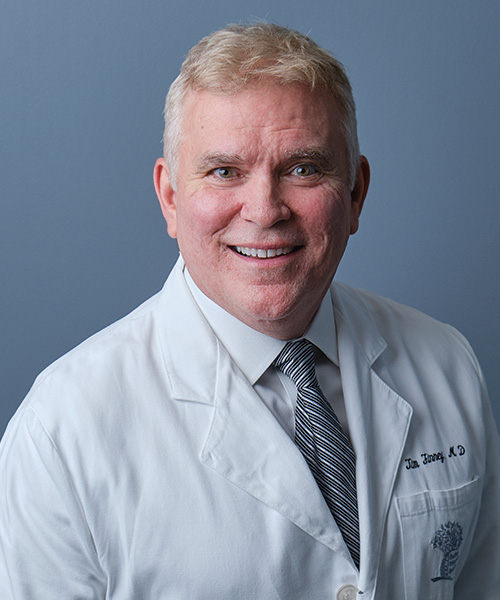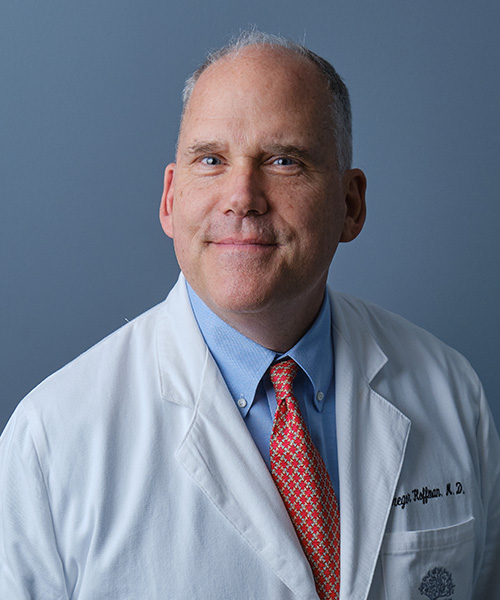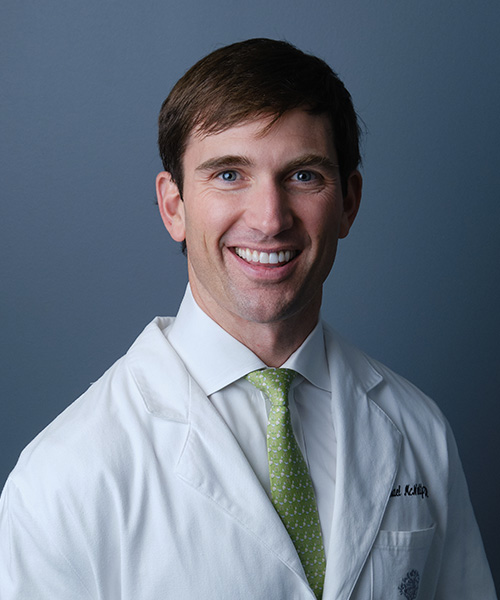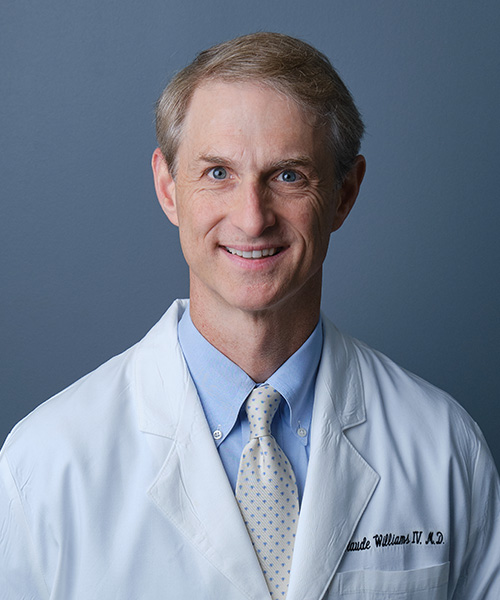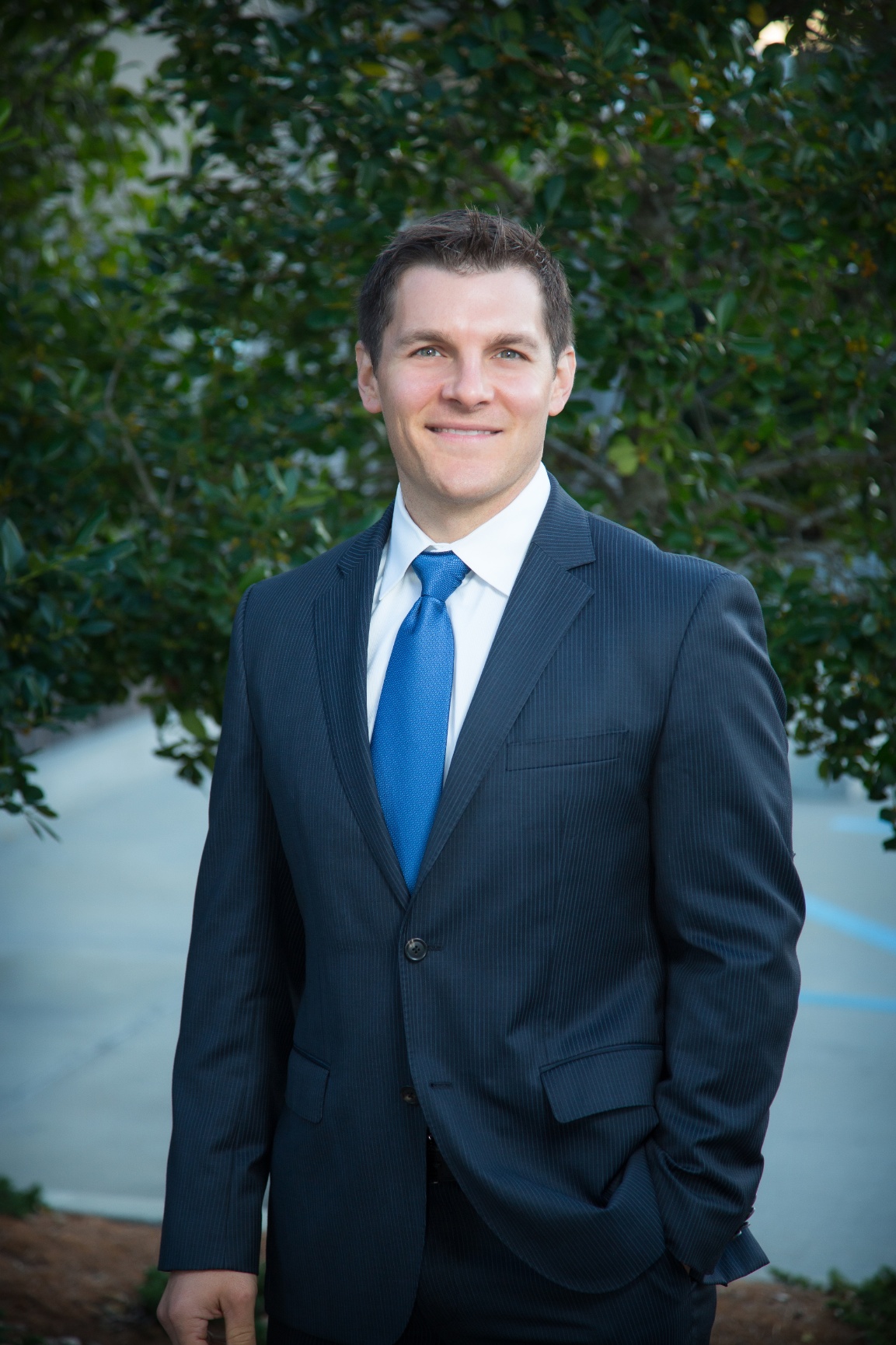Total Shoulder Replacement
Shoulder replacement surgery can treat many painful conditions of the shoulder which may result from damaged cartilage from chronic wear and tear or traumatic injuries. Patients often have shoulder pain that may be worse with activities and limit their function and as well as pain at rest which may interfere with sleep. Shoulder replacement involves removing damaged cartilage and bone and the implanting components that restore smooth pain-free articulation of the joint surfaces.
If shoulder arthritis interferes with your everyday activities, and nonsurgical treatments have failed to provide relief, shoulder replacement surgery may be an option. Shoulder replacement surgery is a procedure that, like hip and knee replacement, has continued to improve over the years to provide better joint function for patients.
Dr. Claude Williams specializes in the latest techniques in shoulder replacement surgery. With over 20 years of experience in shoulder replacement, Dr. Williams continues to adopt new methods and technologies that improve outcomes for patients. Recently developed technology for shoulder replacement surgery allows for more precise preoperative planning and accurate placement of the new implants. Three-dimensional CT scan imaging and surgical planning software is a preoperative planning tool that can help to improve shoulder implant placement in the most efficient manner and helps to preserve normal bone. Dr. Williams is experienced with 3D mapping and offers this option to patients at Southern Orthopaedic Specialists.
In addition to Dr. Williams, Dr. Gregor Hoffman, Dr. Timothy Finney, and Dr. Michael McNulty perform total shoulder replacements.
When Is Total Shoulder Replacement Recommended?
Painful shoulder conditions can often be improved with anti-inflammatory medications, injection of medications such as cortisone and activity modifications including physical therapy. Our surgeons recommend total shoulder replacement only when non-surgical treatments have not sufficiently reduced symptoms. If you are experiencing the following symptoms, you may benefit from an evaluation to determine what treatment is best for you and whether you could benefit from total shoulder replacement.
- Severe shoulder pain limits your daily activities, including getting items out of the cupboard, dressing, and grooming.
- Shoulder pain that continues even while at rest and interferes with sleep.
- Weakness and/or reduced range of motion in the shoulder.
- Symptoms that persist after non-surgical treatments such as anti-inflammatory medications, injections, and physical therapy.
Patients who have a significant deficiency of the rotator cuff due to a large tear in addition to shoulder arthritis may benefit from reverse total shoulder replacement. Reverse shoulder replacement components are designed to stabilize the center of rotation and provide pain free function and improved shoulder motion compared to traditional component design that relies on healthy rotator cuff muscles.
Total Shoulder Replacement Procedure with 3 Dimensional CT Scan
Three-dimensional CT scan imaging and surgical planning software is a preoperative planning tool that allows Dr. Williams to map your specific shoulder anatomy and to plan out implant placement ahead of surgery. It starts with a computerized tomography (CT) scan of the shoulder. The computerized data is used to construct a 3 dimensional image which can then be used with 3-D mapping software to determine the best size, shape, position, and angle for the shoulder replacement implants. If needed, the software can also be used to create a surgical guide that is unique to the patient’s anatomy prior to surgery.
3D mapping may be beneficial for planning shoulder replacement surgery:
- It allows Dr. Williams to view the patient’s unique anatomy including any specific arthritis damage and to plan out steps of the procedure ahead of time. This can improve accuracy and reduce the time in the operating room needed for the procedure.
- 3D mapping can determine the proper size and shape of the implants and precisely guide the bone preparation and positioning of the shoulder implants.
- Accurate implant placement leads to improved shoulder motion, strength and and longevity of the shoulder implants.
Alignment and position is very important to the overall function and longevity of the shoulder implants and 3D mapping is a tool to help achieve the optimal outcomes. Like tires on your car, proper alignment provides for smooth movement and reduces wear on the implant surfaces.
Once the plan is made, the shoulder replacement procedure is essentially the same as with traditional bone preparation and implantation. During a shoulder replacement, Dr. Williams removes the damaged portions of the shoulder joint and replaces them with prosthetic components. The primary difference is that with 3D mapping, Dr. Williams has already determined the best size and placement of the implants. This can reduce the time needed to accurately size and position the implant the components and to complete the procedure, especially in more complex cases.
Recovering from Total Shoulder Replacement
Following shoulder replacement surgery, patients usually stay in the hospital over one night although some shoulder replacement procedures can be performed as a same day outpatient procedure. Your surgeon will discuss options with you prior to surgery.
In addition to general anesthesia, the anesthesiologist may also provide an injection around the nerves to the shoulder and arm to reduce pain for a period of 12 to 24 hours after the surgery. After the nerve block wears off, pain is controlled with medications to make you as comfortable as possible.
Patients are instructed on exercises the first day after surgery and are advised to avoid any lifting or reaching with the arm for the first 6 weeks. A sling is used during the first 2-4 weeks after shoulder replacement surgery when moving around or in public. The sling may be removed for bathing, when at rest and for exercises. Patients are permitted to type on a computer and do other light activities involving the hand during this time.
More shoulder activities are incorporated at 6 -8 weeks and progressive strengthening and stretching exercises progress by 12 weeks. Visits with a physical therapist may be helpful during this time. Patients can normally return to most daily activities after 12 weeks although more active athletes may require more recovery time to safely get back to their full activities as strength and function continue to improve for 6-12 months; your surgeon will advise when it is safe to return to specific activities.
Total Shoulder Replacement in New Orleans, LA
Dr. Claude Williams, Dr. Gregor Hoffman, Dr. Timothy Finney, and Dr. Michael McNulty, perform shoulder replacement specialist with Southern Orthopaedic Specialists. Dr. Williams has over 20 years of experience with total shoulder replacement, and incorporates the latest techniques including 3D mapping for total shoulder replacement. If you would like to schedule a consultation with one of our surgeons, please call our office at (504) 897-6351 or request an appointment via our online form.


